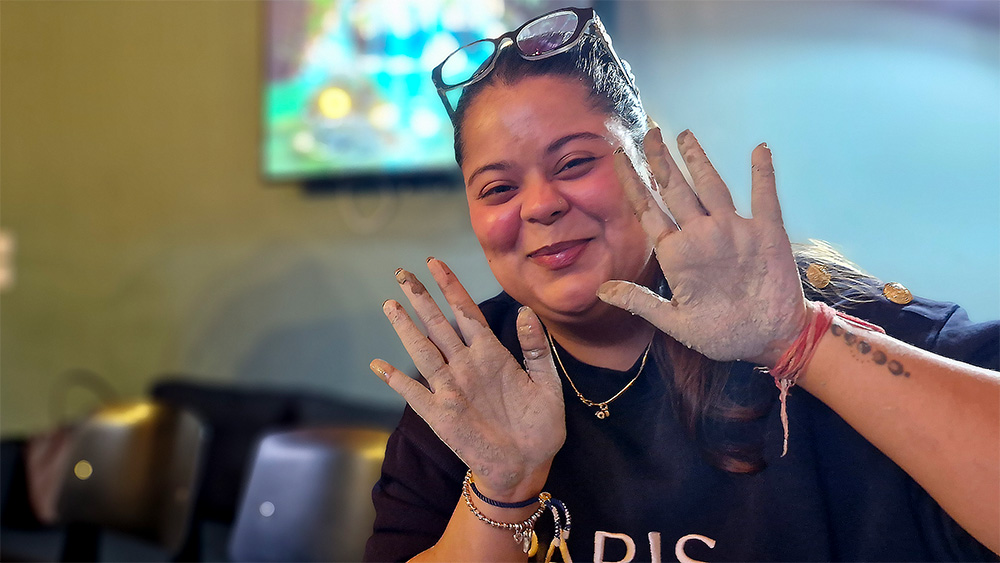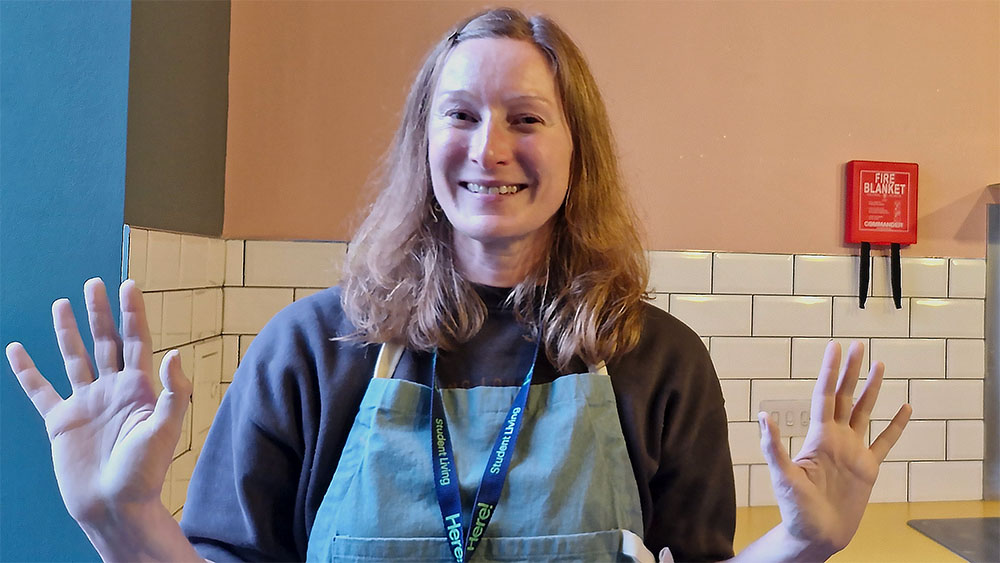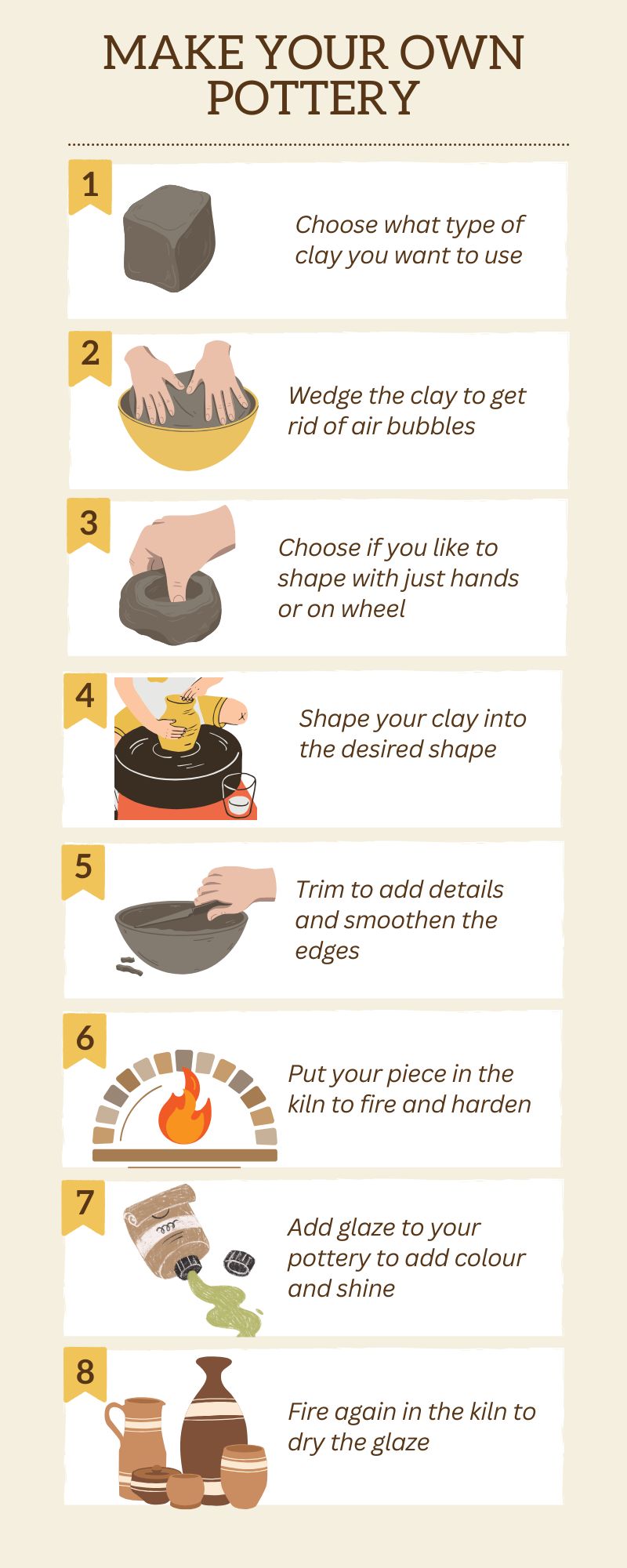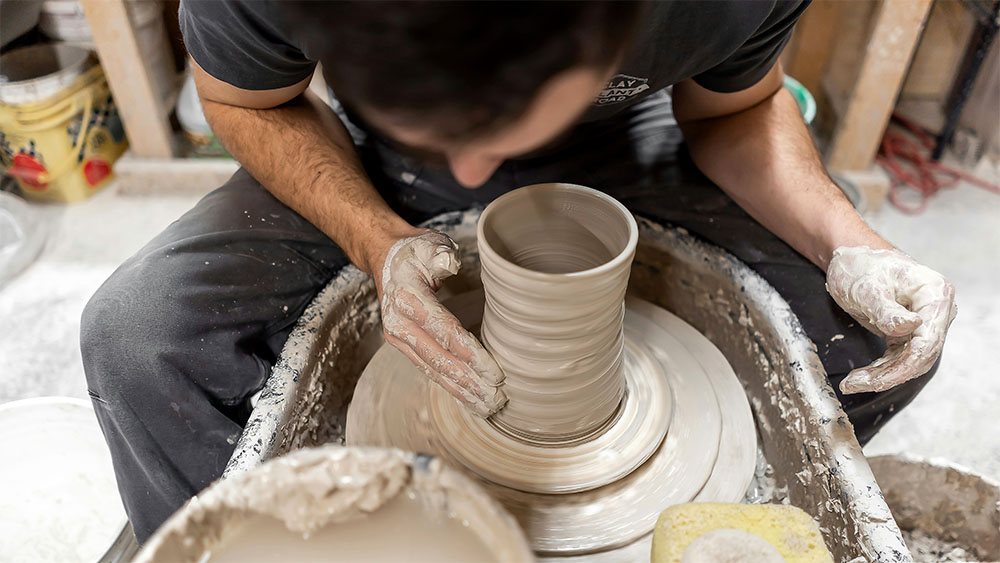Pottery is gaining popularity as a creative escape from daily stress. But what’s behind this resurgence, and how does the act of shaping clay contribute to mental well-being and relaxation?

As hands meets the spinning clay on the pottery wheel, the chaotic outside world comes to a quiet halt for Ali Graham.
The lump of earth responds to touch, shaped by gentle pressure and motion. The rhythm of the wheel focuses the mind, while water softens the clay, making it smooth and responsive. Each movement is a fine balance of control and release, turning raw material into form. In this process, distractions fade, leaving only the rhythm of creation.
“I love the feeling of it. It is a very tactile feeling, getting your hands in the clay. It is also very good for releasing stress and frustration,” says Ali Graham, who has been teaching ceramics in Cardiff for twenty years. “You could create something so quickly, which is beautiful.”
Ali has been working with pottery since she was 14. She pursued an undergraduate degree in applied arts and mixed media, followed by a master’s and PhD in ceramics. Now, she works as a wellness teacher, but her connection to clay has been lifelong.

Pottery is often referred to as a stress reliever, offering a hands-on, meditative escape from daily pressures according to a study by the London School of Business and Administration .
Ali thinks the rhythmic motions of moulding and shaping clay promote mindfulness, helping to calm the mind and improve focus.
“It’s quite a funny story,” says Ali. “When I was little, I loved sitting in the mud—and I’d even eat the clay. Totally weird, right? But I liked the taste and texture for some reason. I always wanted my hands to be dirty, to get stuck in the mud. So, when I realized pottery was something I could actually do at school, I was all in. You couldn’t get me out of the studio.”
There are courses and clubs around Cardiff that help people learn pottery at a beginner-friendly level. The classes in the Chapter in Canton are the most popular because of the wheels and kilns available.
“When I first started, it was hard getting students to come in the classes. It was tricky to get the number of people we needed. And then what really happened to us was The Pottery Throwdown on Channel 4. I can’t remember when that started now, but it must be ten or fifteen years,” says Ali.
Pottery has grown in popularity as a hobby since the Channel 4 show- The Great Pottery Throw Down premiered. The program, which features amateur potters competing in creative and technical challenges, has captured viewers with its blend of beauty, talent, and emotionally stirring moments.
As a result, pottery classes and workshops have seen a significant rise in demand, with many people eager to experience the therapeutic and hands-on nature of working with clay. The show’s appreciation of workmanship and emotional narrative has sparked a new surge of enthusiasm, transforming ceramics from a specialised craft to a popular recreational activity.
“As soon as that went out on television, we were full. All the classes. What people say is they didn’t realize what the potential was for clay. They didn’t realise what they could do,” says Ali.

“I started doing pottery after I lost someone very important to me. When the world felt too loud, the clay and creating my own little knick-knacks helped me feel grounded,” says Evan Hans, who has been practicing pottery as a hobby for three years.
Meena Palli another participant in the class says, “The repetitive motions of shaping and moulding the clay allowed me to focus on the present, leaving behind all the noise in my head. It’s not just about creating something beautiful, it’s about the process.”
A study by PTSD UK, show creative activities like pottery can lower stress hormones and boost well-being. Beyond relaxation, it fosters self-expression and a sense of accomplishment, making it a popular tool in art therapy for emotional healing.
Throughout history, ceramics have played a crucial role in everyday life. Ancient civilizations relied on pottery for practical uses like storing food and water, while also using it as a canvas to express culture, beliefs, and creativity. The tradition of shaping clay has connected us to the past, and its influence still inspires us today.
“The clay tells you what it wants to be. You don’t have to worry about messing up and wasting material. If you make a mistake, you can just start over. It is amazing how liberating that feels,” says Ali.

Pottery has been increasingly recognized as a therapeutic tool for those struggling with PTSD (Post Traumatic Stress Disorder ). Participating in the process helps people focus on the present moment, which reduces anxiety and intrusive thoughts. Art therapy research suggests that hands-on creative activities such as pottery encourage emotional expression and healing while also providing a nonverbal approach to process trauma.
“Pottery is a great form of meditation because it allows you to focus entirely on the creative process, giving your mind a break from daily stress. Like adult coloring, it helps clear your head,” says Evan. “I’ve always turned to creative activities like life drawing for stress relief, but pottery is especially meaningful since you create something you’ll use every day. The messiness of it also makes you slow down and disconnect from distractions, something we rarely get to do as adults.”
Ali says, “Just do it. Just get your hands dirty and maybe bring some hand cream afterwards because your hands get very dry,” to those looking to start pottery.
